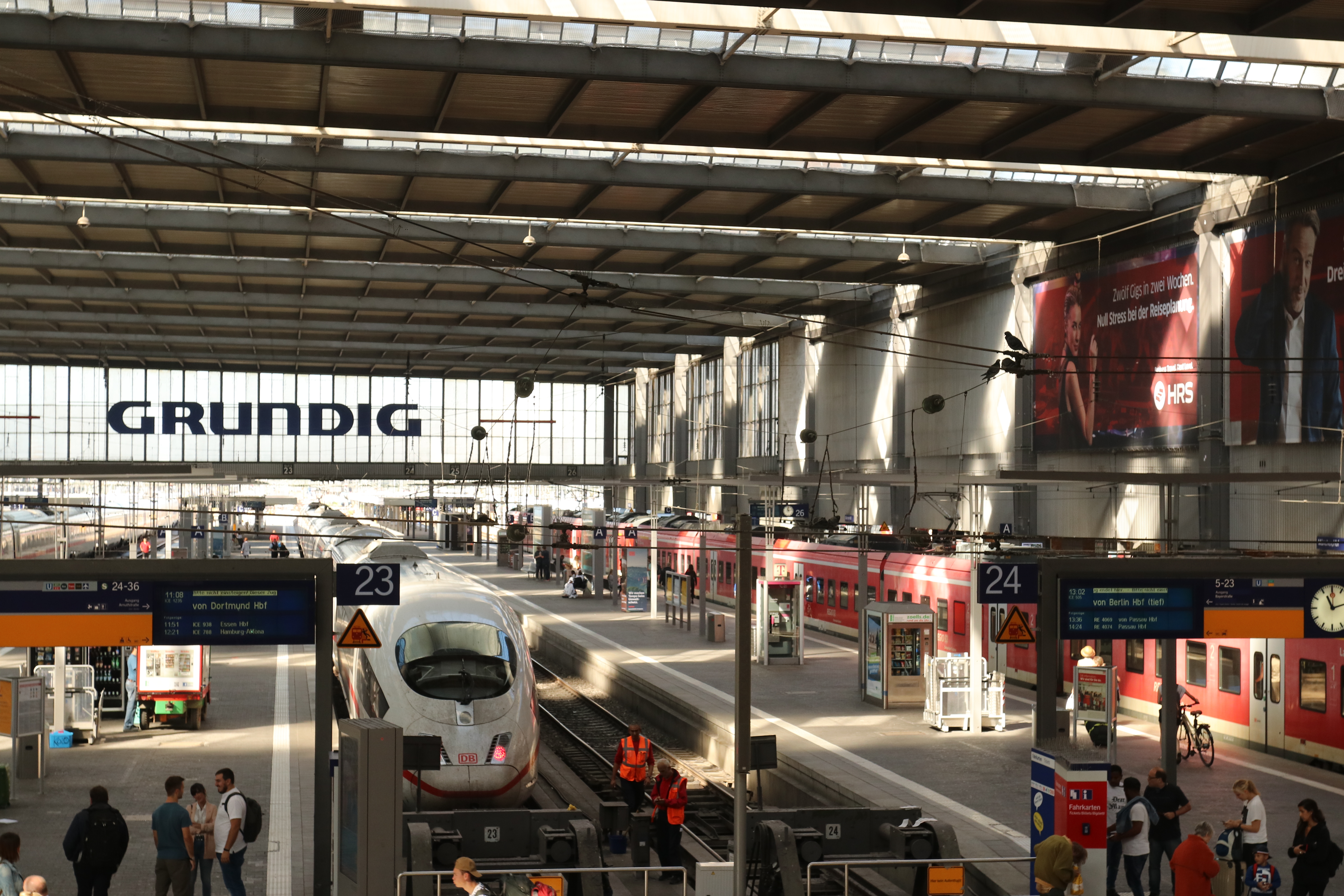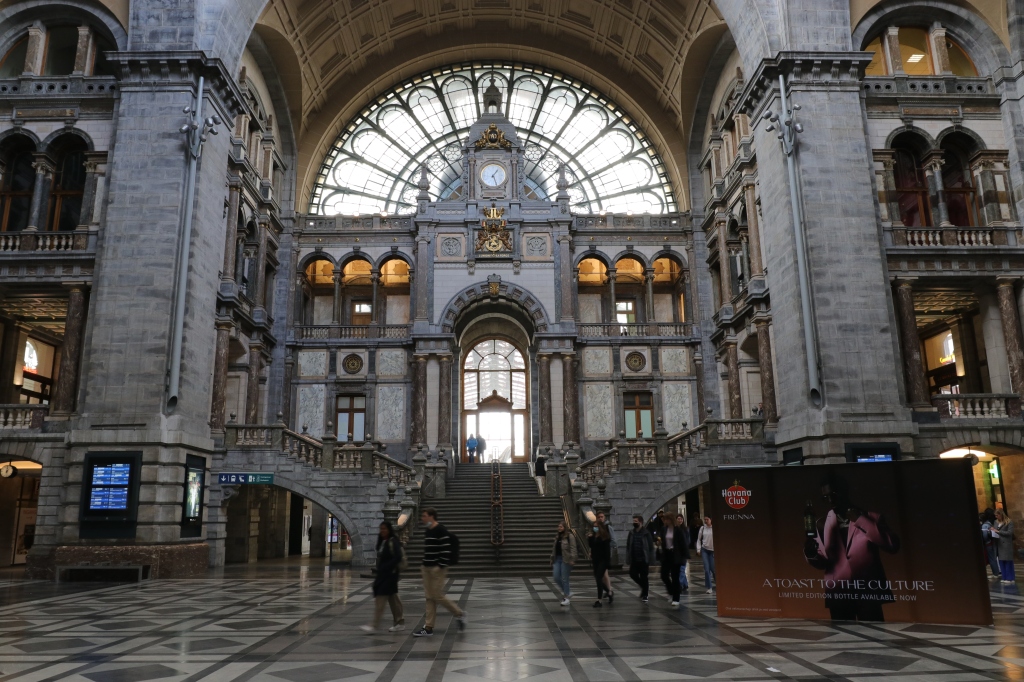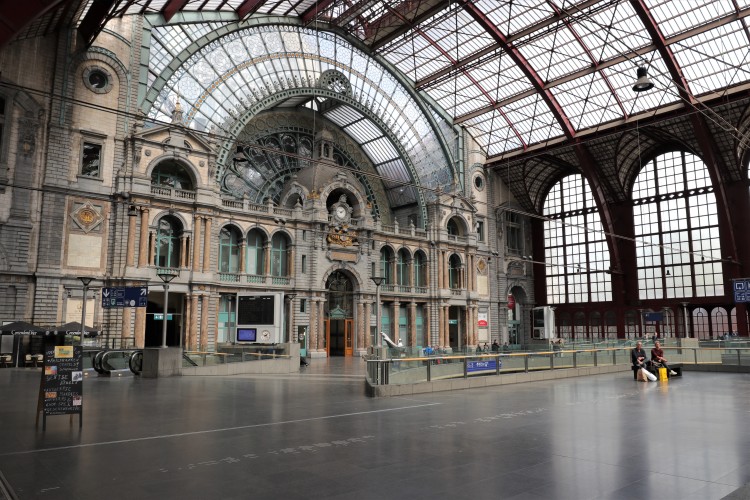Last Updated on the 7th of April, 2024
I was raised in a small town that had train tracks running right through it, and ever since then, seeing and hearing trains has always brought me a sense of discovery and wonder. They activate my imagination and trigger my passion for exploring places near and far.
Having travelled extensively by train in my early 20s, I can confidently say that travelling by train is the quintessential way to tour Europe. It’s romantic. It’s inspiring. It’s super-efficient. It’s comfortable. You might even say it’s almost magical.
There’s nothing like looking out the window during the journey at charming villages, well-kept farms and beautiful old cities zoom past, allowing you to get lost in your thoughts.
There is no better background to inspire you to draw, write or engage in whichever form of creativity suits you best. You can just close your eyes, relax and be carried away by the sensations, the noises and the silences to discover why trains fascinate you so much.
Just a few weeks ago, we had the amazing experience of embarking on yet another train tour of Europe – specifically Northwestern Europe – pulling out of Dublin late one Sunday evening to explore some cities like Amsterdam for the third time, and two new cities in a country we had visited before – Ghent and Antwerp.
While all our chosen destinations themselves were exciting and intriguing; there was an added joy to the trip because we were going from city to city by train, watching the world whizz along while sitting in the comfort of our seats.
While train travel isn’t popular in every country in the world, it is a great way to get around Europe. Over the years we’ve taken a good few long trips around Europe – there was a well-curated, two-week rail trip that took us from Salzburg in Austria to Venice in Italy and all the way to Switzerland where we had a chance to feast our eyes on the Swiss Alps.
We embarked on a trip from Munich in Germany to Lake Bled in Slovenia and had a wonderful opportunity to catch a train to Venice at the end of the journey to see its canals and crumbling facades.
All in all, there are plenty of reasons to travel by train. Some routes are incredibly beautiful. Plus, whether you are trundling through the Swiss Alps, taking the Caledonian Sleeper train from London to Inverness in the Scottish Highlands or venturing from Europe to Asia on the Trans-Siberian railway, each route is a completely unique experience.
Book Your Train Journey Around Europe with Trainline

#1. Train Travel is Convenient
Travelling by train is the best way to travel, especially if you are planning on visiting several countries and cities in Europe especially if you use a Eurail Pass that gives you unlimited, borderless travel across Europe with just one ticket, so you can go a lot further with your money.
Europe is a fantastic place for train travel because routes traverse the entire continent, usually with places of interest every few miles. It’s a great way to travel on almost forgotten railway lines to smaller towns and villages.
- Train stations are centrally located – Most of the train stations are located in the city centre and you don’t have to spend money or time on a transfer to the centre, so once you get off the train, you’re right where you need to be to start your visit to the city.
- Your luggage never gets lost – you can have a piece of mind knowing that your belongings are safely on the train with you, always within your view.
- Train travel is flexible – most trains don’t require you to make a reservation. You can simply turn up, purchase the ticket and board the train.
- The rail network in Europe is vast – it drastically increases your travel options. Even the smallest towns are connected by railroad.
- You don’t have to worry much about a missed train – If you’re late for your flight, it’s not as simple as just boarding the next one – you may have to pay the full fare for another flight, which is unlikely to leave for at least a couple hours. If you missed the train and you travel with Eurail Pass, it gives you unlimited flexible train travel on travel days, so you can just hop on the next service. Easy!
- Stable fares – compared to airlines, train fares tend to be pretty much the same day after day on any particular route, whether it’s Tuesday or Sunday, July or November, three months in advance or a few hours before the departure.
- Trains double as hotels – if you choose an overnight train, you can go to sleep in one country and wake up in another.
- E-tickets – many rail services now offer electronic tickets that are sent directly to your phone. This means no waiting in ticket lines and it makes planning your train travel even easier.
Read More: 8 Memorable Things To Do In Ghent | Attractions and Activities

#2. You Get To Enjoy Panoramic Views
Yes, I have to say that the views of our world from 30,000 feet up in the air are some of the most beautiful I’ve seen so far, especially when traversing over mountain ranges.
But the same goes for trains – without a doubt, one of the best bits of travelling by train is the views along the way.
You just can’t match the nostalgic views you get from the train window. Trains usually have large windows that invite travellers to take in the different landscapes they are travelling through.
Instead of an endless sky, you get to see from an aeroplane, beautifully framed landscapes through a train window are the main reasons why we love travelling by train. Alpine vistas, coastal stretches, arched bridges and little villages are just a few things you can see along the way.
Read More: A Short Guide To The Top 8 Things To See And Do In Delightful Bruges, Belgium

#3. The Cost of Travel
Air travel can be very expensive, but getting around Europe by train is a fantastic, cost-effective and stress-free option if compared to flying.
With an extensive network of trains, you can hop from one city to another one without breaking the bank. In most cases, you don’t even need to make a reservation which means you can just show up, buy a ticket and get on board.
One of the best things about train travel – is you don’t have to pay a separate fee for your luggage or seat. There are no limits on baggage weight or restrictions on liquids, so you don’t have to worry about being hit with those pesky fees and can bring as many shampoos as you can.
With SNCF trains, for example, if your bike is stored in a bike bag and does not exceed 120 x 90cm, it counts as luggage. This can easily be achieved by taking out the wheels and putting the bike in a bike bag.
- Kids travel for free – If you are travelling with children, or kids under 5 when booking with SNCF, Renfe-SNCF, Eurostar, Thello, Lyria, Thalys or Deutsche Bahn, they travel for free and don’t even need a reservation once they sit on an accompanied adults lap.
- Trains double as hotels – You can also book a night train trip and save on the hotel or motel charges that you would have incurred when staying at the facilities.
- Trains often have discounts – Another interesting about trains being more effective for saving money is that rail operators often give some discounts and special offers, especially to students, children, military personnel, as well as seniors. During our rail journey around Belgium, we enjoyed the Duo Ticket promotion where two adults could travel for the price of 1 Standard Ticket.
Read More: 8 Amazing Reasons Why Latvia Should Be On Your Travel Radar

#3. Sanity
Compared to air travel, there is no such thing as waiting in long lines for check-in, security or boarding.
You never have to walk through body scanners, take off your shoes for inspection put your luggage through an X-ray machine or even have it searched. This means there’s no need to arrive hours before your departure time, like with airlines.
At the train station, you simply walk in and board your train a few minutes before it leaves the station and enjoy the journey. Once on the train, you are free to move around whenever you need to as there are no restrictions to staying in your seat.
You don’t have to switch off your electronic devices and can stay on a phone with a friend for as long as you want.
Trains are also a perfect place to read, play cards and relax as many of them have seats that face each other with a table in the middle where you can easily spread out your books and lunch. Not to mention more legroom and wider seats than some of the airlines, especially the budget ones.
Read More: Belfast Bucket List – The 10 Best Things To See And Do In The City

#4. Green Travel
Over the last few years, the subject of climate change has become more and more widespread, raising concerns about the future of our planet and ecosystem. And there’s a valid reason for that. As our everyday lives become more automated and mobile, our carbon footprint continues to increase leading to serious consequences for the environment and the health of our planet.
Air travel is now one of the fastest-growing contributors to climate change. If you worry about the climate impact of your trip, know that train travel is much greener than flying – or driving, for that matter. Choosing not to fly is a powerful pro-environmental action that helps you shrink your carbon footprint.
Trains, as well as buses, not only use a significant amount of fuel less, but they also release much lower amounts of carbon dioxide into the atmosphere.
While it would be naive to think that you can completely stop all activities and habits that affect your carbon footprint, there are countless ways that you can consciously reduce it to a minimum, and travelling by train is one of them.
Read More: Sligo Travel Guide: 8 best things to do in Mullaghmore Village

#5. You can Eat and Drink From Your Own Menu
If you fancy a hot snack, some trains in Europe have top-class regional and local cuisine on board. In the UK, GWR serves top-quality food in their ‘Pullman Dining Car’.
If you don’t feel like spending money buying food onboard or at the train station, you can purchase a picnic-type lunch/dinner and snacks from a local deli and bring them with you.
Yes, you can bring your own food and drinks, even wine and beer – those who want to save their budget for the destination needn’t worry: one of the many benefits of train travel is that you can take your own food, drink and as many liquids as you can with you.
*Our Crossings tip – Not all trains have trash bins inside the compartments. Some have tiny bins that are quick to overflow. Bring your own bag for trash – either a paper bag or a reused plastic bag – to keep your seat area or compartment tidy.
Read More: 8 Amazing Reasons Why You Should Vist Edinburgh At Least Once

Plane vs Train
Having travelled both by plane and train during our week-long trip around Belgium and the Netherlands, I wanted to compare the experience. When it comes to speed, a train journey can be daunting and long when compared to a flight.
But, you’d be surprised to find that when you add things like commuting to the airport, going through customs security, and eventually boarding, you might find that you’re spending an additional amount of time flying.
Upon departure
- Arrive 2 hours before boarding
- Make sure your luggage doesn’t exceed the allowed dimensions
- Check-in your checked luggage
- Go through airport security and passport control
- Arrive 10 minutes before departure
- 3 items of luggage per passenger, free of charge
- No luggage check-in or collection upon arrival
On the plane | train
- Narrow seats, no space to move
- Artificial light sources & air pressure
- Shut down all electronic devices for take-off and landing
- Notoriously expensive food and drinks
- Turbulence
- Comfortable seats and room to stretch your legs
- Big windows and natural light
- Stay connected (to the Internet) during the entire journey
- You can bring your food and drinks
Upon arrival
- Wait in line for passport control and customs
- Wait for your luggage
- It will probably take at least another half hour and more money to get to your destination
- You arrive right in the heart of the city, and your destination is only a few minutes away. All you have to do is step off the train and you’re there!
The Takeaway?
Before you default to booking your next short domestic trip on the airlines, give the train a shot. It may not always win out on time savings at first glance, but the price often is and convenience comes included.

Useful Tips For Traveling With Trains In Europe
You can either plan your own route or use the Interrail pass which enables you to a set amount of trains within a certain period.
Where to buy the tickets |Usually, the best place to buy European train tickets is the rail service website for that country. In Ireland, this is The Irish Rail, French Railways use SNCF, Austrian Railways have ÖBB and Czech Railways have cd.cz.
- Be flexible | Some of the train services are also popular commuter services with locals heading to work and back. These are usually from 6-10 and from 3-7 on weekdays. try to avoid travelling during peak times
- Book in advance | For high-speed trains, it’s best to buy tickets early to get the cheapest tickets. In most cases, train tickets can be purchased 60-90 days before the departure date but buying a few weeks early is usually fine.
- Make sure you have the correct train station because many cities have multiple stations. Paris, for example, has six stations, London is a city with twelve major railway stations around the central area of the city.
- Pay attention to your things | Train stations can get very busy, hectic, and full of confused tourists so they’re a common target for pickpockets and other scammers
- Don’t forget to validate your ticket | Many train tickets need to be validated (stamped with time/date) before entering the train so look for small validation boxes near the entrance of the platforms.
… … … … … … … … … … … … … … … … … … … … … …
Now, over to you!
Do you love travelling by train? Let us know in the comments!
Let us know if you are plotting a train trip around Europe and have travel-related questions!


I love European train travel. I wish it could be more of a thing here in Canada but it is not. Great post as usual. Bernie
LikeLike
I love traveling by train. Thanks for the reminder for me to do it again
LikeLiked by 1 person
I am glad to hear that, Ali 🙂 Train travel is easily the most underrated form of long-distance travel out there. Air travel certainly has its ups and downs, and long car trips can easily go awry. But train travel? Under most circumstances, is stress-free. Of course, trains can’t get you everywhere — they can’t cross oceans, and many remote areas don’t have access to them. But for travelling from city to city within a continent, they’re pretty great. Thanks for stopping by and have a good day 🙂 Aiva xx
LikeLiked by 1 person
I would love to travel across Europe by train! Back in June, I travelled across Finland by train and it was such a joyous experience compared to the sad affair of the trains here in the UK.
LikeLiked by 1 person
Hi, Nikki 🙂 It’s so great to hear from you. I hope your summer is going well. One of the reasons I love traveling by train is that you get to see countryside you often wouldn’t see if you were driving the highway or flying thousands of miles in the air. P.s. I love your blog, and I am glad to see that we have so many things in common. I am definitely following along with your travels around Europe and Manchester as well as drooling over your wonderful stationary bits. Thanks for stopping by and have a good day 🙂 Aiva xx
LikeLike